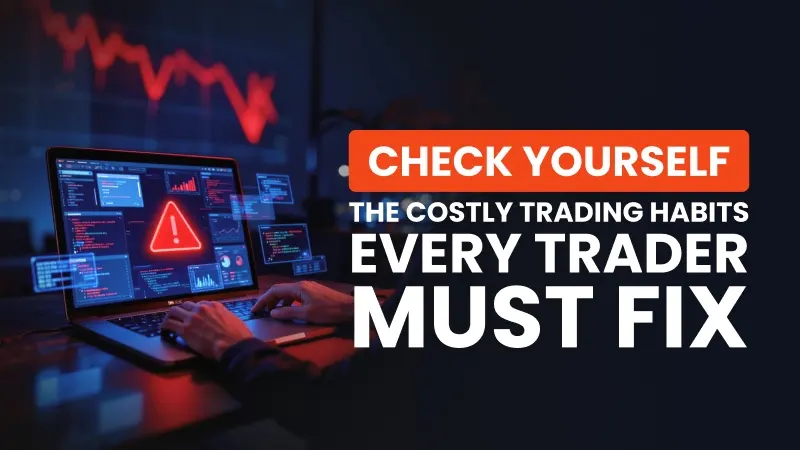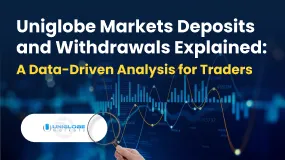简体中文
繁體中文
English
Pусский
日本語
ภาษาไทย
Tiếng Việt
Bahasa Indonesia
Español
हिन्दी
Filippiiniläinen
Français
Deutsch
Português
Türkçe
한국어
العربية
Mastering Support and Resistance in Forex Trading Success
Abstract:Know why support and resistance levels are crucial in Forex trading, the best tools to identify them, and how they impact trading success.

Understanding Support and Resistance in Forex Trading
Forex trading is fast-paced, and keeping ahead requires mastering fundamental ideas that may make or break your performance. Support and resistance levels, the unseen battle lines where buyers and sellers collide, are one of the most essential instruments used by traders. These aren't simply random dots on a graph; they represent market psychology and can help forecast where prices will move next.
Support and resistance levels indicate price locations where the market has previously halted or reversed. Support is the level at which purchasing demand is strong enough to keep prices from dropping further, whereas resistance is the level at which selling pressure prevents prices from increasing. These levels are important because they provide traders with critical information about when to enter or leave deals, manage risk, and make better decisions.
Why Support and Resistance Levels are Important
So, why are these figures so significant? Because they convey market emotion. When prices reach a support level, it indicates that buyers are moving in, feeling the price is low enough to be a good value. On the other hand, as prices approach a resistance level, sellers begin to take profits, believing the price is excessively high. Understanding these fluctuations allows traders to predict whether a trend is strong or likely to reverse.
Another critical notion is role reversal. When a support level is violated, it frequently transitions into resistance—and vice versa. This happens because traders' perceptions of the price level shift. What was formerly considered a purchasing opportunity may now be perceived as a selling zone, causing market behavior to alter.
Beyond technical analysis, it is critical to comprehend the psychology underlying support and resistance. These levels are influenced by more than just historical data; they represent traders' emotions—fear, greed, and the herd mentality. Recognizing these characteristics enables traders to better forecast market swings and avoid frequent errors.

Best Tools for Detecting Support and Resistance Levels
Finding support and resistance levels requires a combination of technical tools and market knowledge. One of the most basic techniques is to draw horizontal lines at previous highs and lows, which frequently serve as psychological barriers where prices rebound or breakthrough. Trendlines are also useful for indicating the market's general direction by connecting a succession of highs or lows. When these techniques are integrated, they provide a fuller picture of potential support and resistance zones.
Moving averages is another effective technique. A moving average smoothes out price volatility to reveal patterns. When prices stay above a moving average, they frequently serve as support. When they go below that level, it might function as resistance. The 200-day moving average is very popular among traders for identifying long-term trends.
Fibonacci retracement levels are another popular technique. These levels, based on the Fibonacci sequence, help identify where prices may pull back before continuing in their original course. Traders frequently examine the 38.2%, 50%, and 61.8% levels for potential support and resistance.
However, support and resistance are not exact figures; rather, they represent zones where price movements are likely to occur. This is why it is critical to employ other indicators such as volume and momentum oscillators to confirm whether a level is robust. Volume, in particular, can give important clues—high volume near a support or resistance level indicates substantial buying or selling activity, increasing the likelihood of a reversal.
One of the most common mistakes that traders make is leaning too much on support and resistance levels without taking into account the wider picture. While these levels are useful, they should be coupled with other forms of research, such as fundamental analysis and market news. A significant economic report or unforeseen event might overturn technical levels and send the market in an entirely opposite path.
Managing Risk with Support and Resistance
Risk management is a critical component of trading using support and resistance levels. Even the most stable levels can fail, therefore traders should always employ stop-loss orders and position size to limit possible losses. A decent rule of thumb is to set a stop loss somewhere below or above support, allowing for market movements while reducing risk.
Final Thoughts
Forex traders rely heavily on support and resistance levels. They give insights into the market mood, aid in determining entry and exit locations, and serve as the cornerstone for risk management. Traders may improve their ability to navigate the Forex market by combining technical analysis with an awareness of market psychology and macro trends.
Learning to master support and resistance, like any other approach, requires practice and constant improvement. Markets change, and so should your attitude. The key to long-term success is to remain adaptable and prepared for change—because, at the end of the day, “the market is always right.”

Disclaimer:
The views in this article only represent the author's personal views, and do not constitute investment advice on this platform. This platform does not guarantee the accuracy, completeness and timeliness of the information in the article, and will not be liable for any loss caused by the use of or reliance on the information in the article.
Read more

Check Yourself: The Costly Trading Habits Every Trader Must Fix
Are the trading habits you barely notice the very ones quietly destroying your profits, and could a single overlooked mistake be costing you far more than you realise?

Scandinavian Capital Markets Exposed: Traders Cry Foul Play Over Trade Manipulation & Fund Scams
Does Scandinavian Capital Markets stipulate heavy margin requirements to keep you out of positions? Have you been deceived by their price manipulation tactic? Have you lost all your investments as the broker did not have risk management in place? Were you persuaded to bet on too risky and scam-ridden instruments by the broker officials? These are some burning issues traders face here. In this Scandinavian Capital Markets review guide, we have discussed these issues. Read on to explore them.

Uniglobe Markets Deposits and Withdrawals Explained: A Data-Driven Analysis for Traders
For any experienced trader, the integrity of a broker isn't just measured in pips and spreads; it's fundamentally defined by the reliability and transparency of its financial operations. The ability to deposit and, more importantly, withdraw capital seamlessly is the bedrock of trust between a trader and their brokerage. When this process is fraught with delays, ambiguity, or outright failure, it undermines the entire trading relationship. This in-depth analysis focuses on Uniglobe Markets, a broker that has been operational for 5-10 years and presents itself as a world-class trading partner. We will move beyond the marketing claims to scrutinize the realities of its funding mechanisms. By examining available data on Uniglobe Markets deposits and withdrawals, we aim to provide a clear, evidence-based picture for traders evaluating this broker for long-term engagement. Our investigation will be anchored primarily in verified records and user exposure reports to explain the Uniglobe Mar

In-Depth Review of Uniglobe Markets Trading Conditions and Account Types – An Analysis for Traders
For experienced traders, selecting a broker is a meticulous process that extends far beyond headline spreads and bonus offers. It involves a deep dive into the fundamental structure of a broker's offering: its regulatory standing, the integrity of its trading conditions, and the flexibility of its account types. Uniglobe Markets, a broker with an operational history spanning over five years, presents a complex case study. It offers seemingly attractive conditions, including high leverage and a diverse account structure, yet operates within a regulatory framework that demands intense scrutiny. This in-depth analysis will dissect the Uniglobe Markets trading conditions and account types, using data primarily sourced from the global broker inquiry platform, WikiFX. We will explore the Uniglobe Markets minimum deposit, leverage, and account types to provide a clear, data-driven perspective for traders evaluating this broker as a potential long-term partner.
WikiFX Broker
Latest News
Gratitude Beyond Borders: WikiFX Thank You This Thanksgiving
MH Markets Commission Fees and Spreads Analysis: A Data-Driven Breakdown for Traders
Alpha FX Allegations: Traders Claim Account Blocks, Withdrawal Denials and Security Breaches
How to Become a Profitable Forex Trader in Pakistan in 2025
CFTC Polymarket Approval Signals U.S. Relaunch 2025
Zipphy Exposed: No Valid Regulation, Risk Warning
KEY TO MARKETS Review: Are Traders Facing Withdrawal Delays, Deposit Issues & Trade Manipulation?
FCA Consumer Warning – FCA Warning List 2025
Australia’s Fraud-Intel Network Exposes $60M in Scams
Voices of the Golden Insight Award Jury | Kazuaki Takabatake, CCO of Titan FX
Currency Calculator



